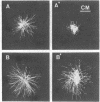Abstract
Amphipathic amines and local anesthetics stimulated reversal of the ciliary beating direction in wild-type Paramecium. Ca++ influx across the surface membrane and the consequent increase in internal Ca++ causes ciliary reversal and backward swimming. Mutant cells of the "Pawn" class, which lack a "gating" mechanism for regulating Ca++ influx, did not swim backwards in the presence of local anesthetics. Local anesthetics stimulated the passive efflux of K+ but had no effect on the active transport of K+ or Ca++. Apparently passive influx of Ca++ also was stimulated by local anesthetics as evidenced by their effects on swimming direction. These data can be interpreted in terms of the "bilayer couple" hypothesis of Sheetz and Singer [(1974) Proc. Nat. Acad. Sci. USA 71, 4457-4461]: amphipathic drugs affect cells by asymmetric insertion into one face of the lipid bilayer. As predicted by this hypothesis, the drugs' effects were seen only after a short time lag, and quaternary amines were less effective than tertiary amines. The effect on behavior was caused by any of several amphipathic cations, and the relative potency was a function of their hydrophobicity. Amphipathic anions, which according to the hypothesis would insert into the opposite face of the lipid bilayer, had little effect on ciliary reversal. Asymmetric perturbation of the lipid bilayer with amphipathic cations may trigger the opening of the Ca++ gate.
Full text
PDF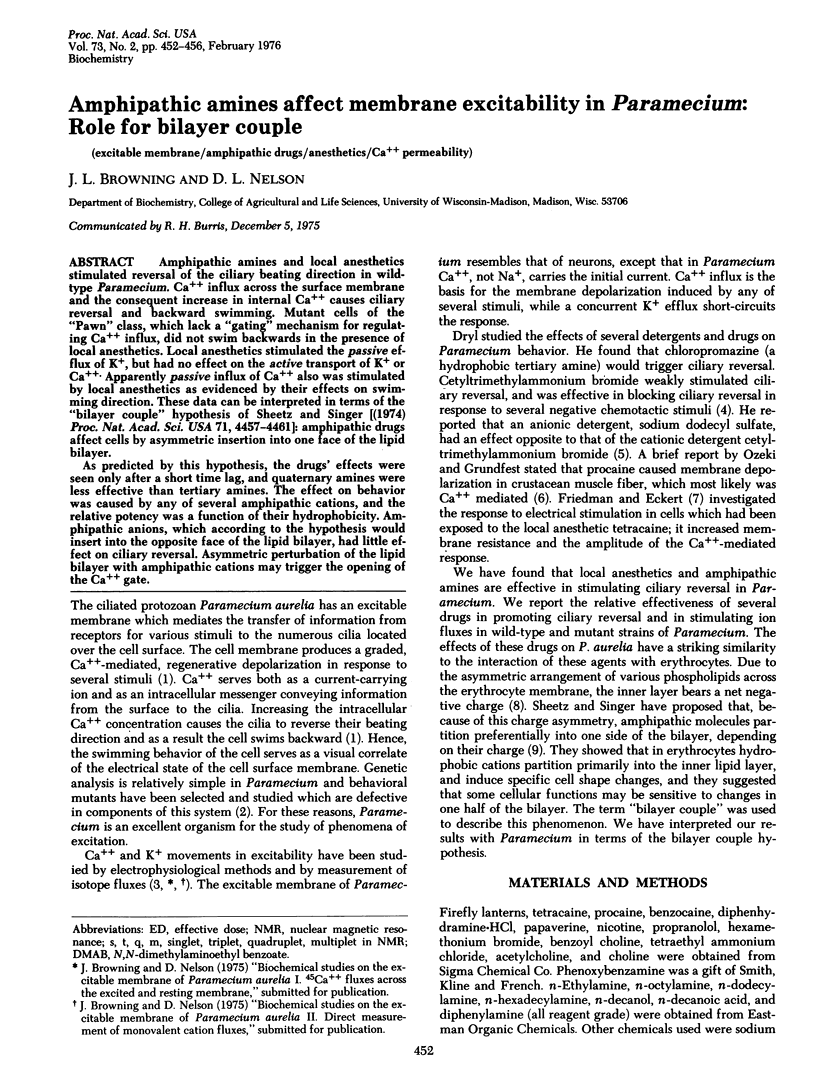
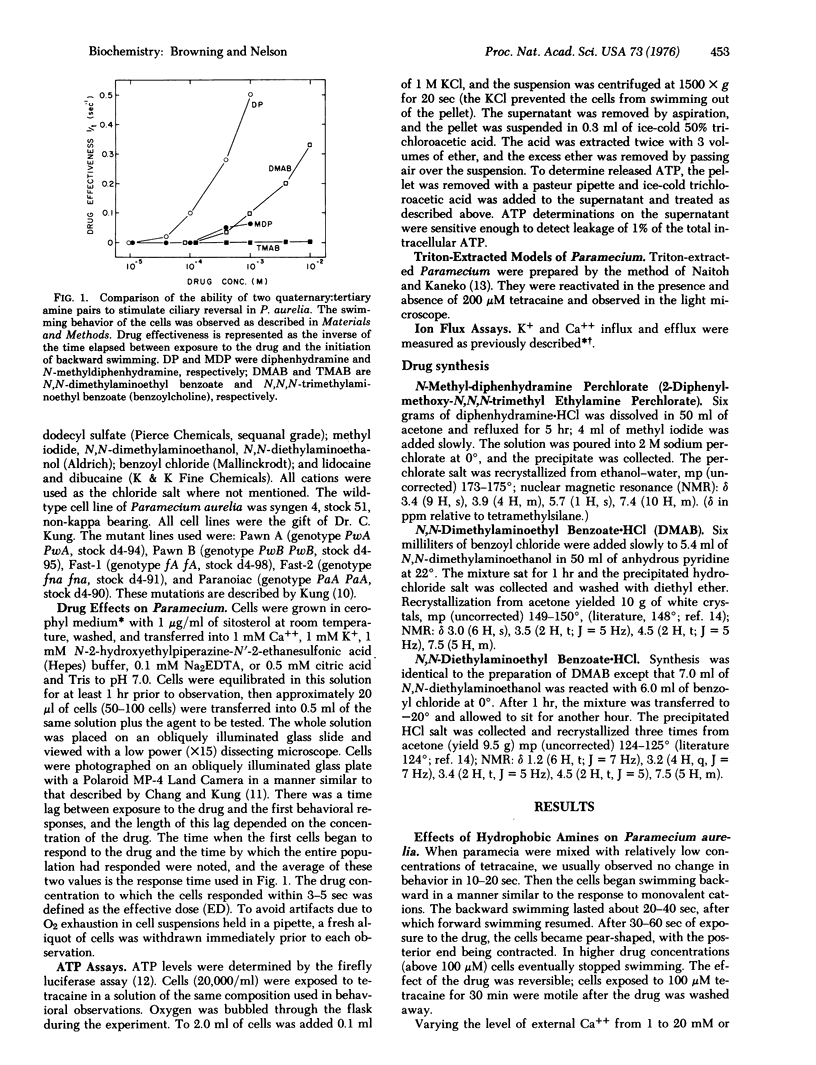
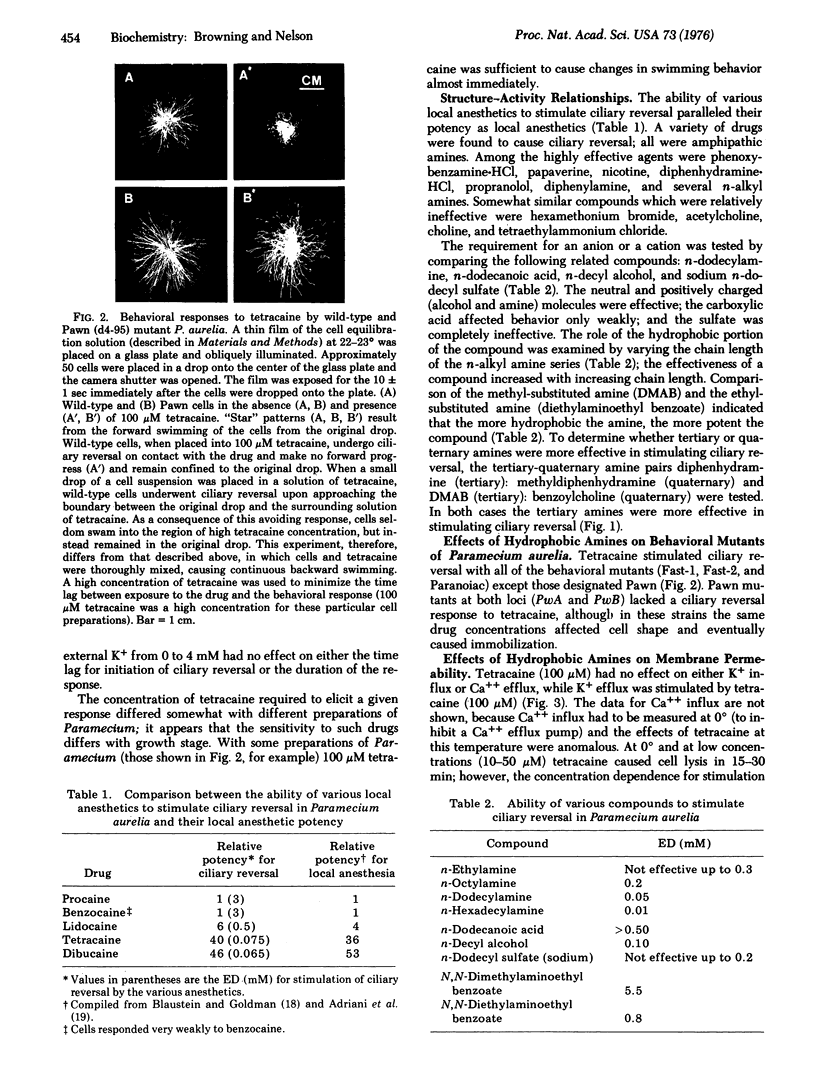
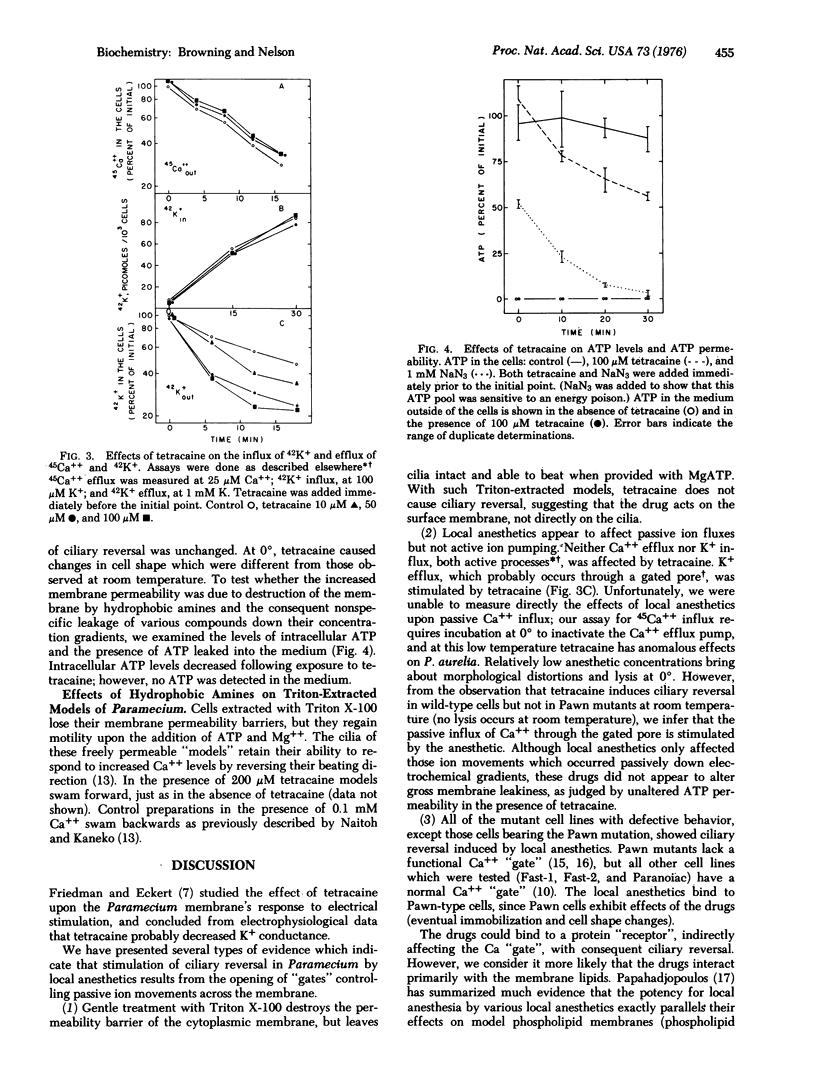
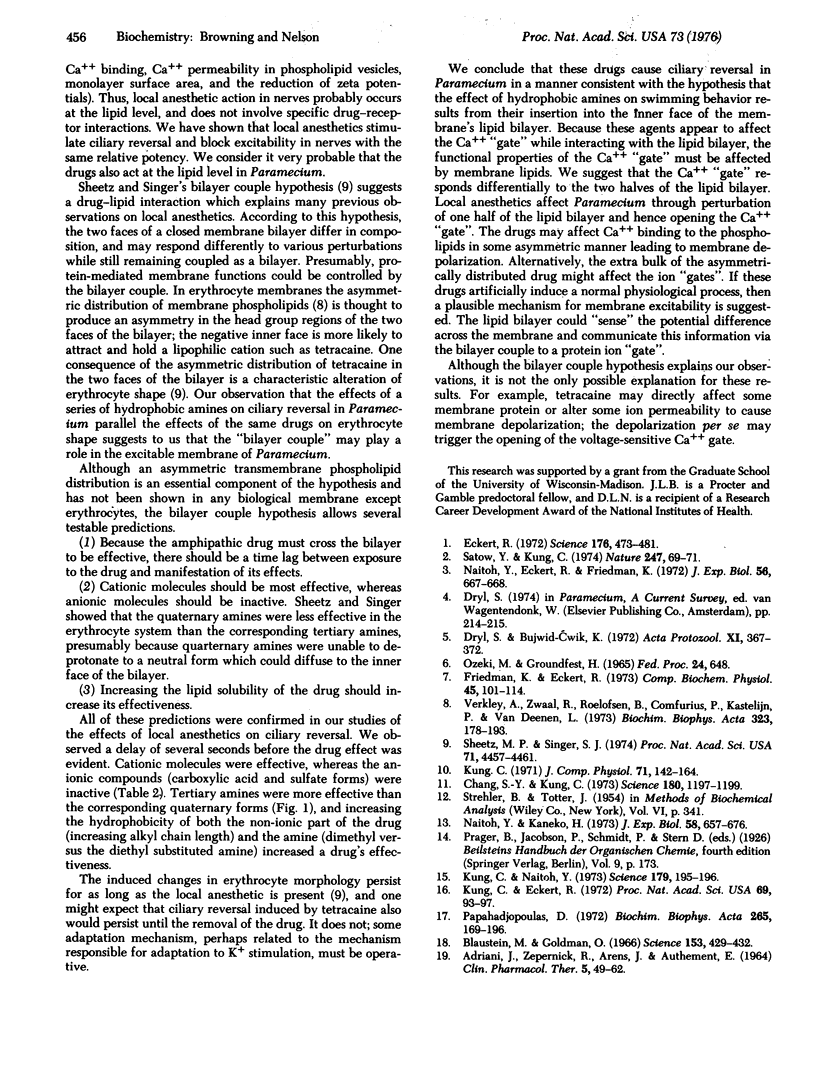
Images in this article
Selected References
These references are in PubMed. This may not be the complete list of references from this article.
- ADRIANI J., ZEPERNICK R., ARENS J., AUTHEMENT E. THE COMPARATIVE POTENCY AND EFFECTIVENESS OF TOPICAL ANESTHETICS IN MAN. Clin Pharmacol Ther. 1964 Jan-Feb;5:49–62. doi: 10.1002/cpt19645149. [DOI] [PubMed] [Google Scholar]
- Blaustein M. P., Goldman D. E. Action of anionic and cationic nerve-blocking agents: experiment and interpretation. Science. 1966 Jul 22;153(3734):429–432. doi: 10.1126/science.153.3734.429. [DOI] [PubMed] [Google Scholar]
- Chang S. Y., Kung C. Temperature-sensitive pawns: conditional behavioral mutants of Paramecium aurelia. Science. 1973 Jun 15;180(4091):1197–1199. doi: 10.1126/science.180.4091.1197. [DOI] [PubMed] [Google Scholar]
- Eckert R. Bioelectric control of ciliary activity. Science. 1972 May 5;176(4034):473–481. doi: 10.1126/science.176.4034.473. [DOI] [PubMed] [Google Scholar]
- Kung C., Eckert R. Genetic modification of electric properties in an excitable membrane (paramecium-calcium conductance-electrophysiological measurements-membrane mutant). Proc Natl Acad Sci U S A. 1972 Jan;69(1):93–97. doi: 10.1073/pnas.69.1.93. [DOI] [PMC free article] [PubMed] [Google Scholar]
- Kung C., Naito Y. Calcium-induced ciliary reversal in the extracted models of "Pawn", a behavioral mutant of Paramecium. Science. 1973 Jan 12;179(4069):195–196. doi: 10.1126/science.179.4069.195. [DOI] [PubMed] [Google Scholar]
- Naito Y., Kaneko H. Control of ciliary activities by adenosinetriphosphate and divalent cations in triton-extracted models of Paramecium caudatum. J Exp Biol. 1973 Jun;58(3):657–676. doi: 10.1242/jeb.58.3.657. [DOI] [PubMed] [Google Scholar]
- Naitoh Y., Eckert R., Friedman K. A regenerative calcium response in Paramecium. J Exp Biol. 1972 Jun;56(3):667–681. doi: 10.1242/jeb.56.3.667. [DOI] [PubMed] [Google Scholar]
- Papahadjopoulos D. Studies on the mechanism of action of local anesthetics with phospholipid model membranes. Biochim Biophys Acta. 1972 Apr 18;265(2):169–186. doi: 10.1016/0304-4157(72)90001-9. [DOI] [PubMed] [Google Scholar]
- Satow Y., Kung C. Genetic dissection of active electrogenesis in Paramecium aurelia. Nature. 1974 Jan 4;247(5435):69–71. doi: 10.1038/247069a0. [DOI] [PubMed] [Google Scholar]
- Sheetz M. P., Singer S. J. Biological membranes as bilayer couples. A molecular mechanism of drug-erythrocyte interactions. Proc Natl Acad Sci U S A. 1974 Nov;71(11):4457–4461. doi: 10.1073/pnas.71.11.4457. [DOI] [PMC free article] [PubMed] [Google Scholar]
- Verkleij A. J., Zwaal R. F., Roelofsen B., Comfurius P., Kastelijn D., van Deenen L. L. The asymmetric distribution of phospholipids in the human red cell membrane. A combined study using phospholipases and freeze-etch electron microscopy. Biochim Biophys Acta. 1973 Oct 11;323(2):178–193. doi: 10.1016/0005-2736(73)90143-0. [DOI] [PubMed] [Google Scholar]



